#Mammisi
Explore tagged Tumblr posts
Text
Denderah - Carvings with Cleopatra VII and her son Ptolemy XV Caesar

The colossal carving of Cleopatra VII Philopator (51-30 BC) and her son Ptolemy XV Caesarion (44-30 BC) before the gods, on the south exterior wall of Temple of Dendera. The large goddess on the right, the first of a procession of deities not included in the photograph, is Hathor. The present temple at Dendera is essentially a Ptolemaic structure, with the exception of the mammisi (or 'birth house') erected by Nectanebo I (380-362 BC), which represents the earliest surviving structure of the complex, and later Roman additions, such as the first hypostyle hall, built by the Emperor Tiberius (42 BC-AD 37). There is evidence, though, that the temple was built on the site of a previous one, dating at least from the early New Kingdom (around 1500 BC) with suggestions of structures being present in the area at the time of Pepy I (2321-2287 BC). The temple, one of the best preserved in Egypt, is dedicated to Hathor. The goddess is usually represented as a cow, often with the solar disc between the horns, in human form with, similarly, the solar disc between cow horns, such as in this case, or as a woman with cow’s ears. Her name means ‘house of Horus’ and, as the living king was identified with Horus, Hathor was considered the divine mother of the pharaoh, who had ‘son of Hathor’ as one of his royal titles. It is then certainly not a coincidence that Cleopatra decided to have this colossal scene carved onto a wall of the temple of Hathor.
#cleopatra#caesarion#cleopatra vii#ptolemy xv caesar#dendera#dendera temple#ancient history#history#archeology#ancient art#art#ptolemaic dynasty#ptolemaic egypt#ptolemies#ancient egypt#egypt#carvings#hathor#horus#gods#egyptian gods
17 notes
·
View notes
Text



Birds and hieroglyphics in the mammisi at Dendera, from my recent trip 17.10.2024
2 notes
·
View notes
Text
The postmaster's note
As I made my way into my airplane seat in an Egyptair 747 and buckled up, having become accustomed to writing down my travel impressions while other passengers braced themselves for take off, a sheet of paper slid almost all by itself as I opened my notebook, plain copy paper a bit yellowed already, someone had left it there probably for safekeeping and forgot to retrieve it
Pylon, the Grand Temple Entrance – The highlight of the Grand Entrance is the two stone sentinels of the falcon-headed god Horus. Don’t miss the relief of Neos Dionysos (Ptolemy XII) holding his enemies by the hair, ready to smite them in front of Horus. This was intended to awe the Egyptian subjects as they entered. Forecourt, the Colossal Courtyard – Surrounded on three sides by 32 towering columns, the huge Forecourt is impressive. The columns are richly decorated with floral and palm capitals, and the walls are covered in reliefs of the gods Horus and Hathor. The Vestibule before entering the Inner Temple -The Vestibule lies after the Forecourt. Decorated with 12 columns topped with floral capitals, the Vestibule has two small rooms. The western room, Hall of Consecration has a beautiful relief depicting gods Horus and Thoth pouring sacred water over the pharaoh. The eastern room used to the temple’s Library and has a list of books it once contained inscribed on the wall. Hypostyle Hall, the Place of Ancient Ritual Preparation – This is one of the most beautiful places in the temple. The Hypostyle Hall’s roof is supported by 12 columns and book-ended by two small chambers, which access the inner passage around the temple. First and Second Antechambers, the Inner Altars of the Priests – The First Antechamber lies beyond the Hypostyle Hall and it has a staircase that leads to the roof, which is closed to the visitors. The reliefs are one of the lovelies there. They depict the procession of priests, headed by the pharaoh. The ceiling has a mural depicting the sky goddess Nut, with the various figures of the sun in boats beneath her. Sanctuary, the Room of the Gods – Lit by three small skylights in the roof, the sanctuary has the most interesting reliefs in the temple. In the olden days, the golden statue of Horus stood upon a granite shrine. Inner Passageway, Passage of Victory – The Inner Passageway runs around the back half of the temple. It can be entered from the Hypostyle Hall and is decorated with reliefs and inscriptions. Nilometer – The temple’s Nilometer can be found by taking a subterranean staircase leading from the eastern side of the Inner Passageway. Things to do around the Temple of Horus Mammisi, the Birth House – To the west of the Temple of Horus’ entrance lies the Mammisi. In the main chamber, on the right-hand wall, there are many reliefs of Hathor.
I failed to recognize him, at the footsteps of the pyramids at a distance, on a plateau overlooking the scenery, fittingly, precisely at dusk hour when everything became an in between day and night, reality and imagination, could he be the bird now that I had turned into his shadow, like him pursuing as many lives as I could entertain, unlike him that did so to seep through the cracks of reality I did so to tell a story, that became many stories, perhaps they were all his stories
Typed notes... I remembered the sound of the postmaster's portable typewriter well into the night, they were surely his, with a handwritten note below that seemed more personal and that I didn't know what to make of, I had their address in Bristol together with a cordial invitation to visit, post them as soon as possible
0 notes
Photo





Après les Dieux, les Déesses. Ici Hathor (1ère partie)
- Abydos
- Le Caire, Musée Egyptien
- Dendérah, salle hypostyle
- Abu Simbel, chapelle de Néfertari- Hathor et Néfertari
- Dendérah, le Mammisi
#mythologie#archéologie#égypte#égypte antique#déesse#divinité#vache#hathor#abydos#musée#le caire#denderah#hypostyle#colonne#hathorique#abu simbel#nefertari#mammisi
5 notes
·
View notes
Photo

the "House of Birth" (the Mammisi) of the Sanctuary of the God Horus at Behdet (Edfu)
51 notes
·
View notes
Photo
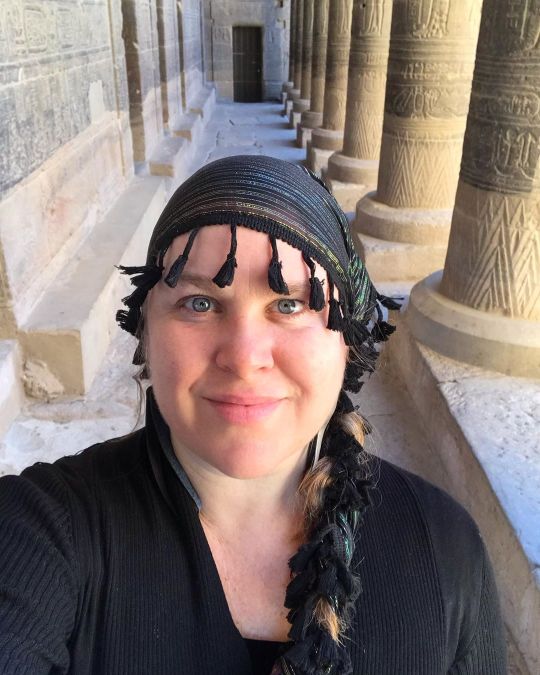
#templeofisis #mammisi #isis #sisters #grateful #blessedbe #egyptpriestesspilgrimage #day5 @sarah.naia.soleil @goddess_rising #sacrednomad (at Philae Temple) https://www.instagram.com/p/B7J0yAfB1Vv/?igshid=1drx4attms727
0 notes
Photo

Guerra Nuclear Antiga? Os degraus de pedra fundidos no antigo templo Egípcio de Dendera. O complexo do Templo de Dendera, que contém o Templo de Háthor, que é dedicado a Háthor deusa do amor, da alegria e da beleza.
#Dendera#dinastia#Egípcio#egípcios#egito#Egito Antigo#Grécia#Guerra Nuclear#Háthor#Igreja Copta#Imperador Tibério#Mammisi#ptolemaico#Quéops#Romanos#templo
2 notes
·
View notes
Text
The Dendera Temple complex, which contains the Temple of Hathor, is one of the best-preserved temples, if not the best-preserved one, in all of Upper Egypt. The whole complex covers some 40,000 square meters and is surrounded by a hefty mud brick wall
The present Temple of Hathor dates back to July 54 BC, at the time of Ptolemy XII of the Ptolemaic dynasty, and was completed by the Roman emperor Tiberius, but it rests on the foundations of earlier buildings dating back at least as far as Khufu (known as the Great Pyramid builder Cheops, the second Pharaoh of the 4th dynasty [c. 2613���c. 2494 BC]) but it was the pharaoh Pepi I Meryre who built the temple
It was once home to the celebrated Dendera zodiac, which is now displayed in the Louvre Museum in Paris. There are also Roman and pharaonic Mammisi (birth houses), ruins of a Coptic church and a small chapel dedicated to Isis, dating to the Roman or the Ptolemaic epoch





175 notes
·
View notes
Photo

Erment (Hermonthis), Vue Générale des Ruines -Temple et Mammisi, Félix Teynard, 1851–52, printed 1853–54, Metropolitan Museum of Art: Photography
Purchase, Lila Acheson Wallace Gift, 1976 Size: 24.3 x 30.2 cm. (9 9/16 x 11 7/8 in.) Medium: Salted paper print from paper negative
https://www.metmuseum.org/art/collection/search/261870
14 notes
·
View notes
Text
La Diosa Hathor amamantando al Niño Harsomtou ( Ḥr-sm3-t3wy , 'Horus el Unificador de las Dos Tierras'); a la izquierda, Ihy el Grande en Su aspecto de Dios joven (con el mechón lateral de la juventud y un dedo en Sus labios) usando la Doble Corona y sosteniendo el 'Ankh' en Su derecha.
"Casa de Nacimiento" (los Mammisi) del Santuario de la Diosa Hathor en Nitentóre (Dendera), detalle del segundo muro intercolumnar (cara exterior sur)

2 notes
·
View notes
Text
For the past couple of weeks, I have been completely engrossed in a new collation of Wepwawet’s epithets and have been trying to lay eyes on as many of the actual in-situ occurances as possible. I am getting pretty close to finishing it now, but have a few holes to fill yet. If any of my readers are in a position to help me tick some more of these references off, that’d be brilliant and much appreciated.
E III: 281, 6
E V: 143, 13; 188, 18
E VI: 289, 16 (This might be an incorrect reference. Someone on another platform did kindly provide me with a page 289 from somewhere, but it contained no reference to Wepwawet. Either they pulled the wrong volume or the reference itself is wrong.)
E Mammisi: 81, 16 (I am hoping to be able to see the larger scene this is a part of as well as hieroglyphs. It’s a strange epithet [nb-nDmt-ds] and I want to try to clarify - I suspect it is some sort of obscure Edfu-specific thing for which seeing the immediate surrounding context for may be helpful.)
[Got it!] Piehl, Inscriptions III: pl.83,U
D XI: 158, 10-12
[Got it!] Quack, ZÄS 127: 78, pl.10
Ockinga and al-Masri, el Mashayikh I, pl.57, #71
Junker & Winter, Das Geburtshaus des Tempels der Isis in Phila, 227.
Krauspe, Statuen und Statuetten, Katalog ägyptischer Sammlungen in Leipzig I: 98.
[Got it!] Leitz, Mag. And Med. Papyri: 60, pl.30
Osing & Rosati, Papiri daTebtynis: 145, pl. 19, 3, 7
Dieter Arnold, Wandrelief und Raumfunktion in ägyptischen Tempeln des Neuen Reiches: p.92
Simpson, Terrace of the Great God (1974), ANOC 61 pl.37 (Hannover 1976.8b, stele of Wenemi)
8 notes
·
View notes
Photo

Inside the sanctuary of the mammisi (birth house) at Philae temple. If you squint, you can see the kind offering to Thoth, Sekhmet, Bastet, and Nehemtawy.
#Ancient Egypt#Sekhmet#Bastet#Nehemtawy#Philae#lioness goddesses parade at Kom Ombo#temple#pharaoh#Ptolemaic
16 notes
·
View notes
Photo
In der Spätzeit wandert der Mythos von der göttlichen Zeugung und Geburt des Königs in den göttlichen Bereich. Die Mammisi (Geburtshäuser) feiern die Geburt eines Kindgottes, den der regierende König nur mehr verehren kann.

detail from the “House of Birth” (the Mammisi) of the Sanctuary of the God Horus at Behdet (Edfu): the Goddess Hathor suckling Harsomtou the Child
34 notes
·
View notes
Text
Hathor Faces, Mammisi, Dendera
The impressive mammisi at Dendera dating mainly to the Roman period. Much of the rich external carving was never finished, but on the south side it is fairly complete and in good condition (aside from the defaced Bes figures above the capitals).
The Temple of Hathor at Dendera is one of Egypt's best preserved and most beautiful ancient shrines. This magnificent edifice dates to the Ptolemaic period, late in Egyptian history, though the site long had been the cult centre for the goddess Hathor for centuries before (the earliest extant remains date to c360BC but a temple is recorded here as far back as c2250BC). Most of the main building dates to the reigns of the last Cleopatras and further decoration and building work within the complex continued in the Roman period up to the reign of Trajan.
The dominant structure in the complex is the Temple of Hathor, an enormous structure with a rectangular facade punctuated by the Hathor-headed columns of the hypostyle hall within. This hall is an architectural wonder, a masterpiece of ancient Egyptian design and decoration, which covers every surface and has been recently cleaned, revealing a superb astrological ceiling in all its original vibrant colours.
Sadly there was much iconoclasm here during the early Christian period and most of the reliefs of the walls and pillars have been defaced. Worse still is the damage to the 24 Hathor-head capitals: not one of the nearly a hundred huge faces of the goddess that once smiled down on this hall has been left unblemished, most with their features cruelly chiselled away.
The main temple building is otherwise structurally intact, and extends into further halls and chapels beyond, again with much relief decoration (much of which is again defaced). In one corner is an entrance to a crypt below, an unusual feature in Egyptian temple architecture consisting of several narrow passages adorned with carved relief decoration in good condition.
There are further sanctuaries and chapels above on the roof of the temple, accessed by a decorated staircase and including the room where the famous Dendera Zodiac was formerly located (today its place in the ceiling taken by a cast of the original, now displayed in Paris). The highest part of the roof complex is no longer accessible to tourists, but I can still recall making the ascent there on our first visit in 1992.
Several other buildings surround the main temple, the most impressive of which is the mammisi or 'birth-house'. This consists of a large rectangluar hall surrounded by a colonnade near the entrance to the site and has some well preserved relief decoration on its exterior. Most of this structure dates to the Roman period, but the ruins of its predecessor built under Nectanebo II (Egypt's last native pharoah) stand nearby. Dendera temple is one of the most rewarding in Egypt and shouldn't be missed. It is one of the most complete and evocative ancient monuments in the country and its recent restoration has revealed a surprisingly extensive amount of colour surviving within (we were amazed by the dramatic contrast with the soot-blackened ceiling we'd beheld on our previous visit in the 1990s). Despite its relative youth (in Egyptian terms at least!) it is easily one of my favourite sites in Egypt.


0 notes
Text
Il Tempio di Philae🌺🌺
Il Tempio di Philae o Tempio di Iside, un tempio classificato tra le grandi attrazioni turistiche dell'Egitto. Era una gemma decorata e piccola sulla sua isola di Philae nel mezzo del Nilo, la parte principale del Tempio di Philae è dedicata alla dea Iside, la madre di Horus e il simbolo dell'affetto, l'ambientazione ha contribuito notevolmente al suo fascino, ma quando il Nilo inizia a sorgere all'inizio di questo secolo quando fu costruita la prima diga, l'isola fu sommersa per gran parte dell'anno, una missione di salvataggio spostò tutte le pietre su un'isola vicina (l'isola di Agilika), fatta preparare nella stessa forma del sito originale.
Situato appena a valle della diga alta, può essere raggiunto con barca a motore a noleggio. Si entra nell'isola vicino a un piccolo portico costruito da un faraone dell'ultima dinastia egizia (Nekhtanebu / 30 dinastia faraonica, l'edificio più antico dell'isola, le colonne hanno i capitelli della testa di Hathor davanti, due lunghe file di colonne da una passerella al Tempio di Iside, tempio di Philae inizia con i soliti piloni, qui decorati con le figure di Iside e suo figlio Horus, con accanto un faraone, due leoni, per nulla feroci a guardia del cancello, il cortile contiene un Mammisi, (casa di nascita’)sul lato sinistro con più Colonne di Hathor, La seconda serie di piloni conduce a una piccola sala ipostila seguita da un santuario (alcuni bei rilievi) dietro il quale le scale conducono al tetto.
A sinistra della sala ipostila si trova la porta dell'Imperatore Adriano, all'interno, a sinistra, Un rilievo raffigura la sorgente del Nilo in una fantastica interpretazione dove il dio del fiume strangolato da un serpente, versa ancora acqua da due vasi. Sopra una roccia siedono un avvoltoio e un falco, gli uccelli, ovviamente, rappresentano il faraone che a sua volta rappresentava tutto l'Egitto, si siedono su una roccia sopra la sorgente perché gli egiziani credevano che il loro fiume inizi da una sorgente.
Sul bordo delle isole, oltre le rovine dei romani è un nilometro. Su un'altra estremità dell'isola c'è un tempio di Hathor con scene graziose e sulle isole, il bordo si trova un gioiello della costruzione dell'imperatore Traiano, la lunga immersione è stata dura per questi edifici, privandoli di gran parte della loro delicatezza, ma l'armonia di questa collezione di edifici del titolo è insuperabile in Egitto, se non nel mondo.
#Egitto #Egypt #Tempio_di_Philae #Assuan #Crociera_sul_Nilo
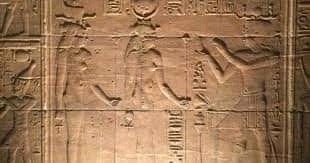
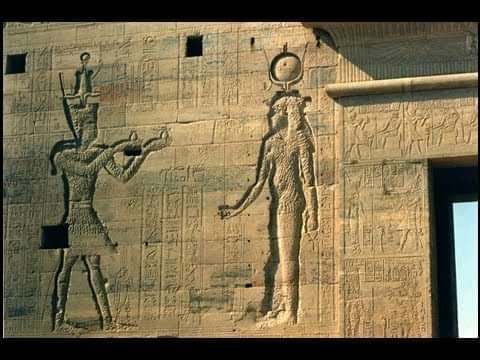
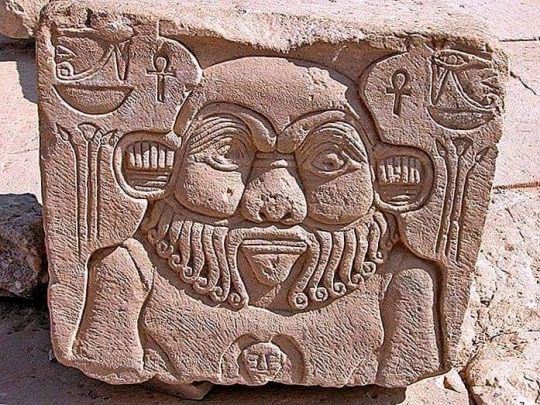
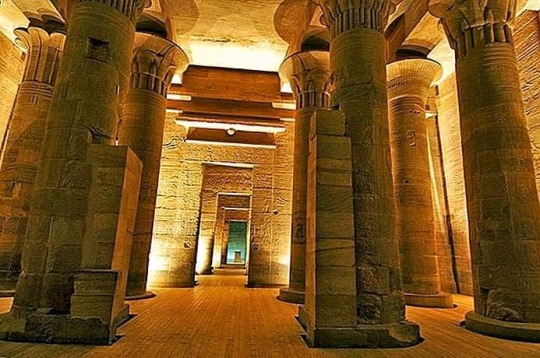

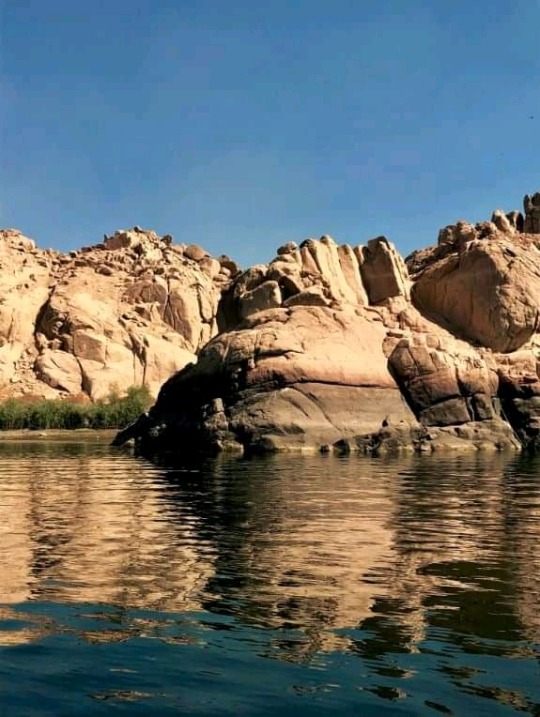
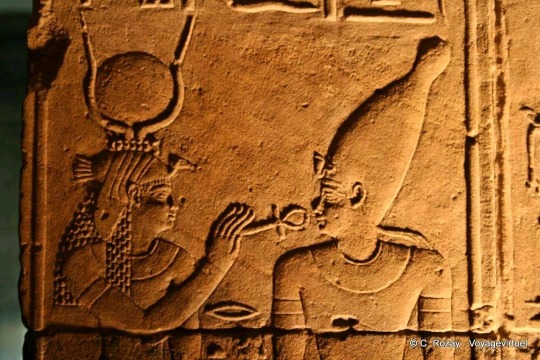
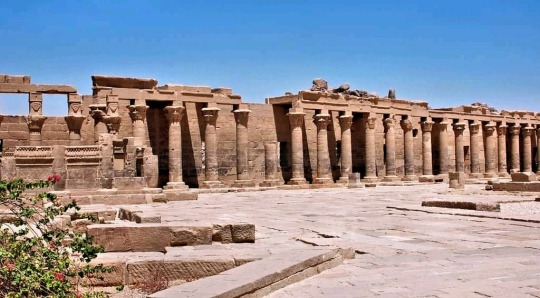
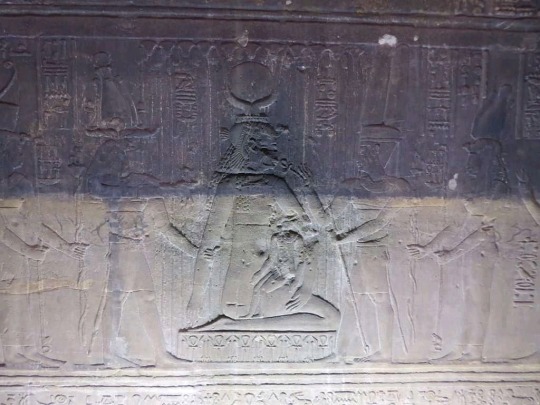

0 notes
Photo

Hathor suckling Harsomtou the Child (Ḥr-sm3-t3wy, "Horus the Unifier of the Two Lands"). "House of Birth" (the Mammisi) of King Nectanebo in the Sanctuary of Hathor at Nitentóre (Dendera), Inner Shrine, background wall, detail from the upper register #iregipto #egyptpassion #discoveregypt #thisisegypt #egypt #MBPlanet #egypt (at Dendera Temple complex) https://www.instagram.com/p/COVha8MnLvV/?igshid=1b003m2wwtfa4
93 notes
·
View notes